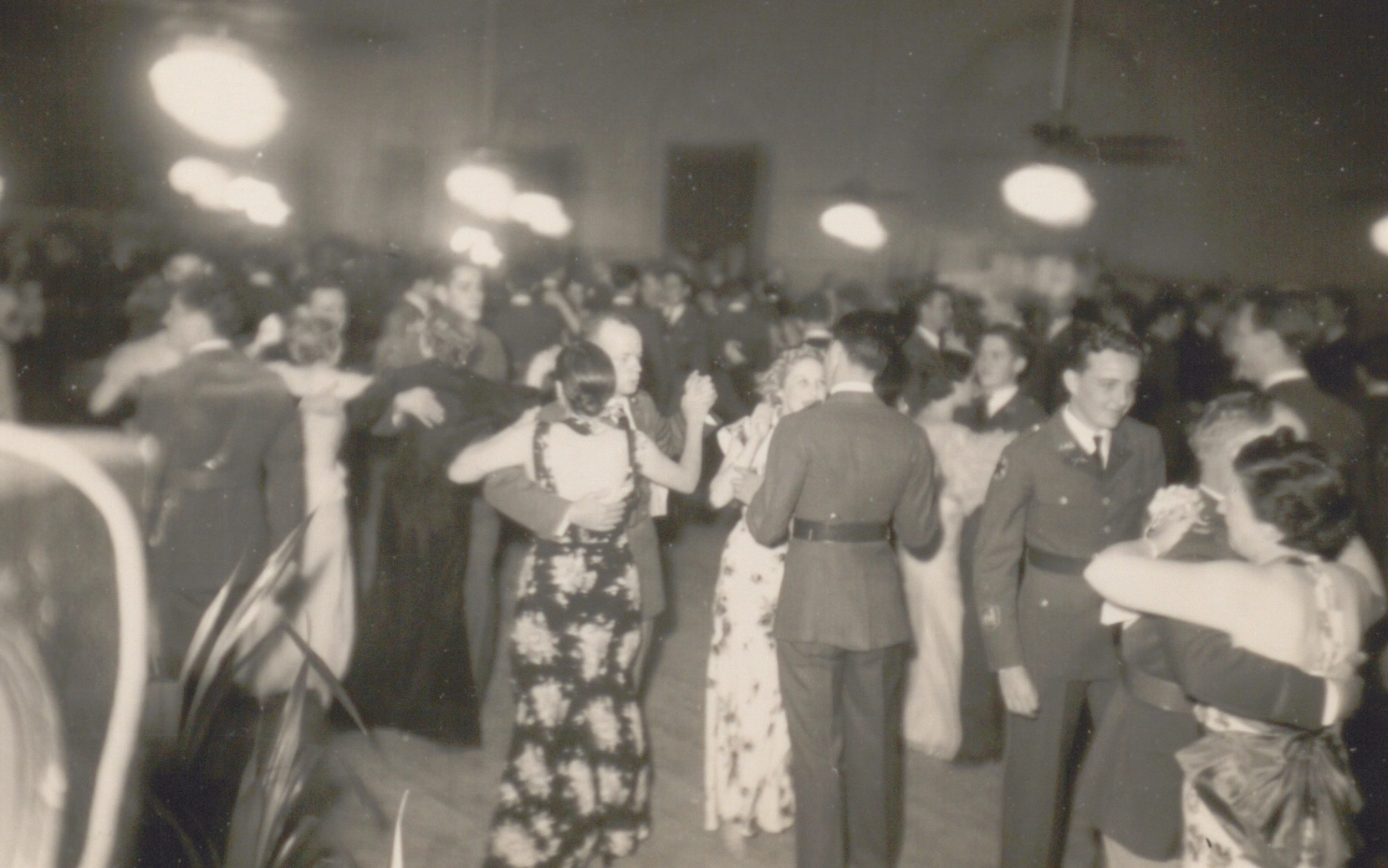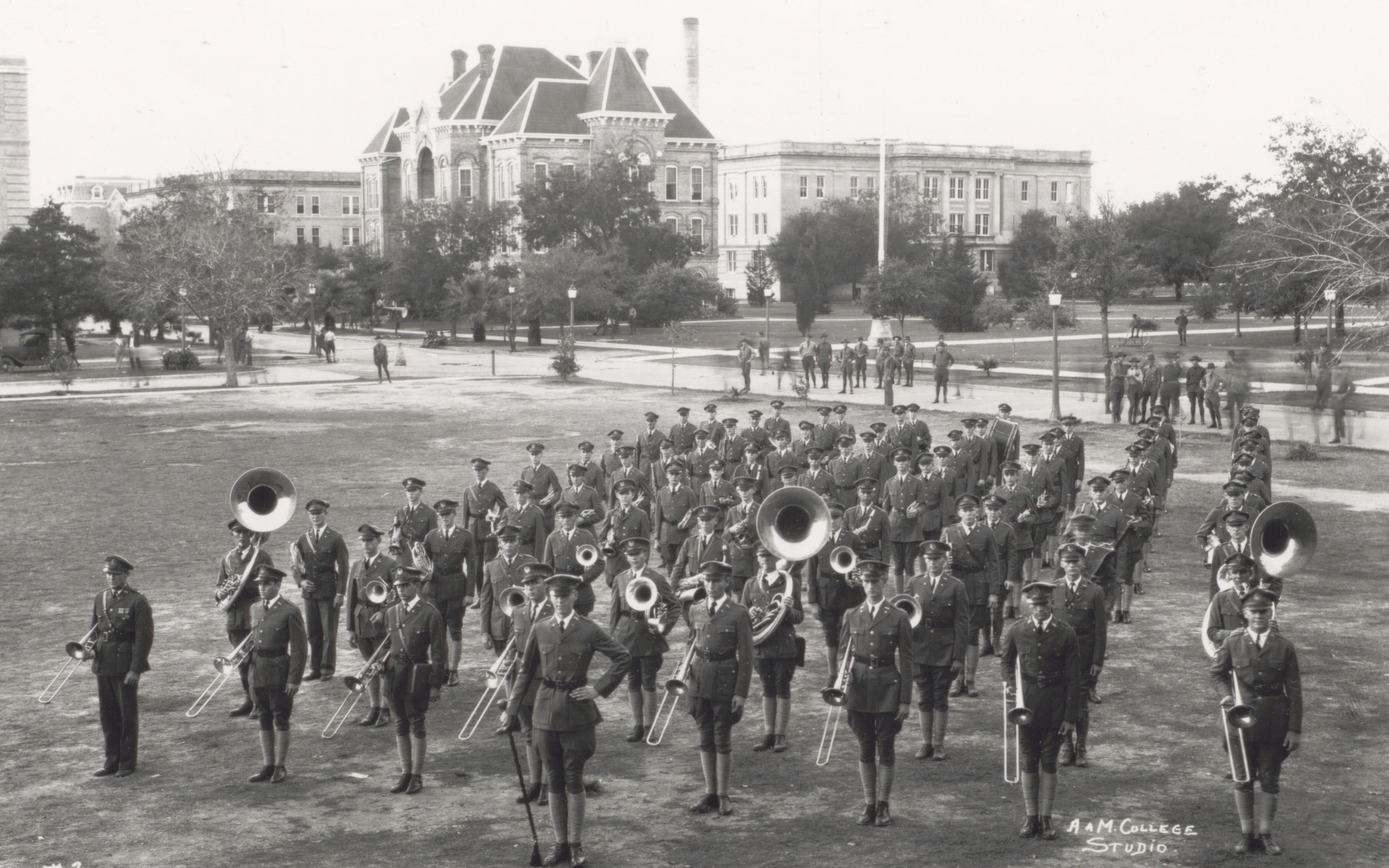Aggieland, circa 1930. The daily notes of “Reveille” ring out over the morning campus, waking cadets. Soon, the Agricultural and Mechanical College of Texas is abuzz as Aggies gather for formation before going about their day.
Not far away, a different population is also beginning to stir. In the nearly 100 houses on campus, university employees and their families are starting their day, and before long, the yells of Aggies heading to class mingle with the excited shouts of children.
Scenes like this were life as usual in Aggieland’s early days, when faculty, staff and their families lived on campus and their children had the enviable privilege of growing up in the unique environment of Aggieland. “I truly believe that the children raised on the campus were the most innocent in the world,” said Ruth (Williams) Lawrence, who lived her entire childhood on campus. “We had freedom to roam at will in a place where everyone kept a friendly eye on our well-being and where we knew we belonged. We were Aggies, and the college permeated almost every facet of our lives.”
When faculty members and their families lived on campus, the kids and teens of campus enjoyed a variety of activities from football and dances to birthday parties and games with friends.
Though these experiences of growing up on campus are now part of Aggie years gone by, the stories of those like Lawrence were preserved thanks to a “Memory Lane” oral history project conducted by the City of College Station’s Project HOLD in the 1990s. Through their memories, anyone can step into the campus kids’ shoes (and roller skates) and experience life in the early days of Aggieland from a perspective few have ever seen: through the innocent, fun-seeking, awe-filled eyes of a child.
Like a Kid in Aggieland
As with many happy childhoods, the campus kids recalled days filled with outdoor adventures, shenanigans with neighbors and games galore, all in an Aggie setting. Every sidewalk on campus was a road for bicycles and roller skates; every tree a perch to climb; every bush the perfect spot for hide-and-seek.
“The campus was our playground. We did anything we wanted to.”
Their adventures took them to Kyle Field—where many a tricycle and wagon was ridden down the steep concrete ramps (and many a knee was scraped)—to the Academic Building, where a group marshaled a brief attempt to fly kites from the dome—and to the Downs Natatorium swimming pool, where everyone swam until long after their fingertips shriveled. “The campus was our playground,” said Alice (Scoates) Garner, whose father, Daniels Scoates, is the namesake for Scoates Hall. “We did anything we wanted to.”
In its early days, Aggieland was separated from the nearest town of Bryan by 4 miles, so campus functioned as its own independent village. Delivery of fresh milk, grocery shopping, laundry, mail and haircuts were all handled on campus. Elementary and high school students attended A&M Consolidated not far from where Aggies received their own education, churchgoers gathered at the YMCA Building, and hospital staff treated many of the kids, even delivering some born on campus.
 Dances were one of the most exciting Aggie interactions for the teenage daughters of faculty and staff.
Dances were one of the most exciting Aggie interactions for the teenage daughters of faculty and staff.
For entertainment, the children could watch movies in Assembly Hall and later Guion Hall, where they rubbed shoulders with Aggies and often got free peanuts by throwing one at cadets and receiving a playful pelting of dozens in return. “I was grown before I realized that not everyone answered the actors on the screen and whistled throughout the movie,” Lawrence said.
But perhaps the most thrilling encounter with the Aggies for teenage girls like Lawrence was dances at Sbisa Dining Hall. “There were so many boys that you rarely took as many as three steps with one before you were cut in on,” she recalled. “The dancers were friendly, the dresses were formal and felt wonderful, and it all seemed magical.”
The Good Ol’ Days
Living on campus placed the children in the thick of Aggie traditions without leaving their yard. Many of the houses were concentrated around the drill field and the Memorial Student Center’s current location, placing them directly in the path of game day march-ins and routes to the stadium for the throngs of visiting fans. Of course, the kids were the biggest fans of all, watching and cheering with the Aggies.
 Children had a front-row seat to Fightin’ Texas Aggie Band performances and practices.
Children had a front-row seat to Fightin’ Texas Aggie Band performances and practices.
Bonfire was another experience that burned brightly in many kids’ memories. “Day by day, we could watch the Bonfire being assembled,” recalled Lee (Adcock) Hunnell, who lived on and off campus in the 1940s. “Finally, the big night would come. The band would march in, the fire would be lit, and we would all run around in the sparks.”
In such close quarters with both faculty families and cadets, it’s no surprise the community was tightly knit. Faculty and students alike knew whose kids were whose, and families would often call on one another or spend evenings gathered in someone’s yard. Kids learned swimming, music and horseback riding from faculty experts. And in the rare emergencies when someone’s house caught fire or a child went missing, the Aggies turned out in force. “When anybody got in trouble, everybody would come to help,” recalled Laetitia (Cofer) Haines, who was born on campus. “The campus was a real family.”
Though the campus kids era ended in 1941 when faculty houses were moved off campus to make way for new developments, the spirit of the campus kids lives on. Next time you meet a child running around Aggie Park with their family or lining the streets with their Aggie parents on game day, look in their eyes, and you’ll see it: the same awe and joy as the next generation experiences the magic of a place called Aggieland.
Scenes from campus during this era included the Downs Natatorium swimming pool (top left); the Aggie Bonfire (top right); Guion Hall, where many a movie was watched (bottom left); and Kyle Field (bottom right).
Send Message to Dunae
Thank you for submitting a contact form!
Contact form was unable to submit.